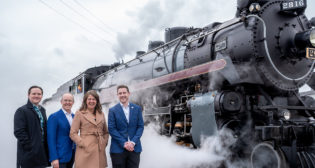
Chicago-Rockford Passenger Rail Service Returns
Written by Marybeth Luczak, Executive Editor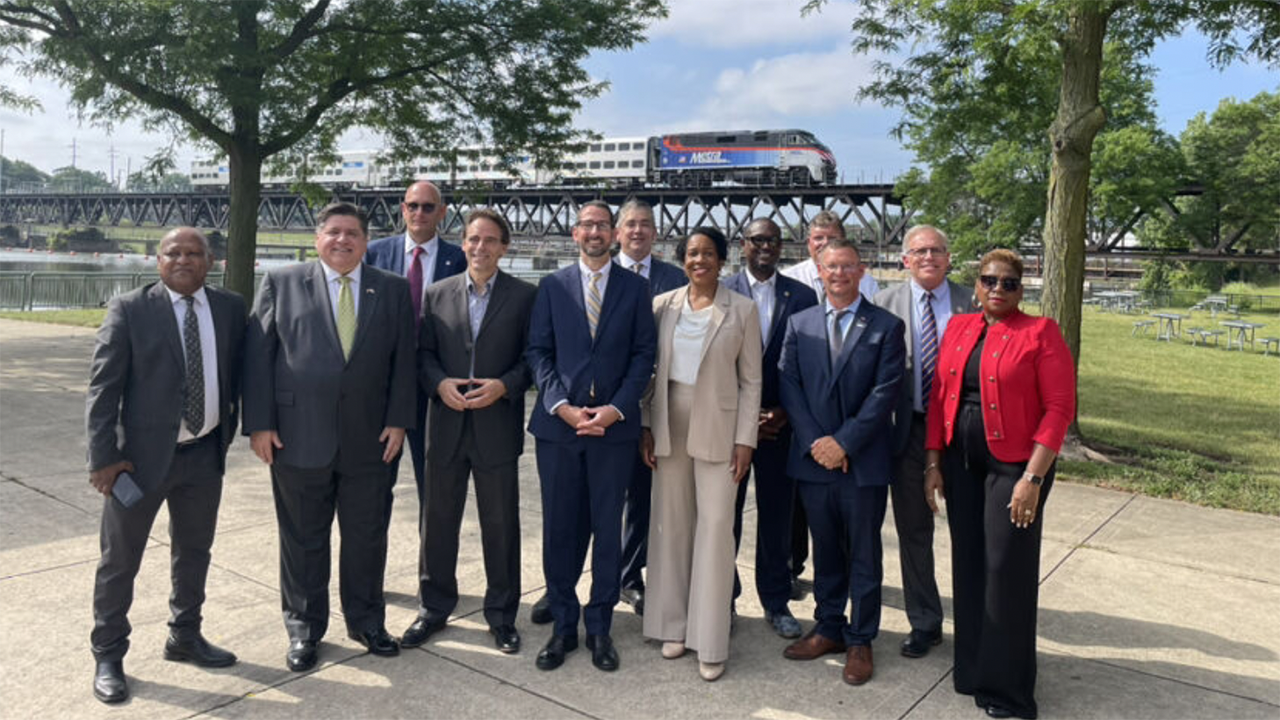
On July 6, Metra Board Chair Romayne C. Brown and CEO/Executive Director Jim Derwinski joined Illinois Gov. JB Pritzker and Rockford, Ill., elected officials to announce that the commuter railroad will operate state-supported passenger rail service to Rockford starting in late 2027. (Photograph and Caption Details Courtesy of Metra, via Twitter)
Partners Illinois Department of Transportation (IDOT), Metra and Union Pacific (UP) will restore Chicago-Rockford, Ill., passenger rail service in late 2027. The Rebuild Illinois* capital plan includes $275 million for the project, which was announced July 6.
Amtrak’s Black Hawk service between Chicago and Dubuque, Iowa, including an intermediate stop in Rockford, last ran in 1981.
To return passenger trains between Chicago and Rockford after more than 40 years, the Chicago-based Metra commuter railroad was selected by the state to use its Milwaukee District West line and relationship with host railroad UP to extend service beyond Elgin to reach Rockford, with expected stops in Huntley and Belvidere, according to Illinois Gov. JB Pritzker’s Office.
According to the Rockford Star, Metra was chosen over Amtrak; officials said its advantages include “its ownership of the Milwaukee District West railroad line between Chicago and Elgin.”
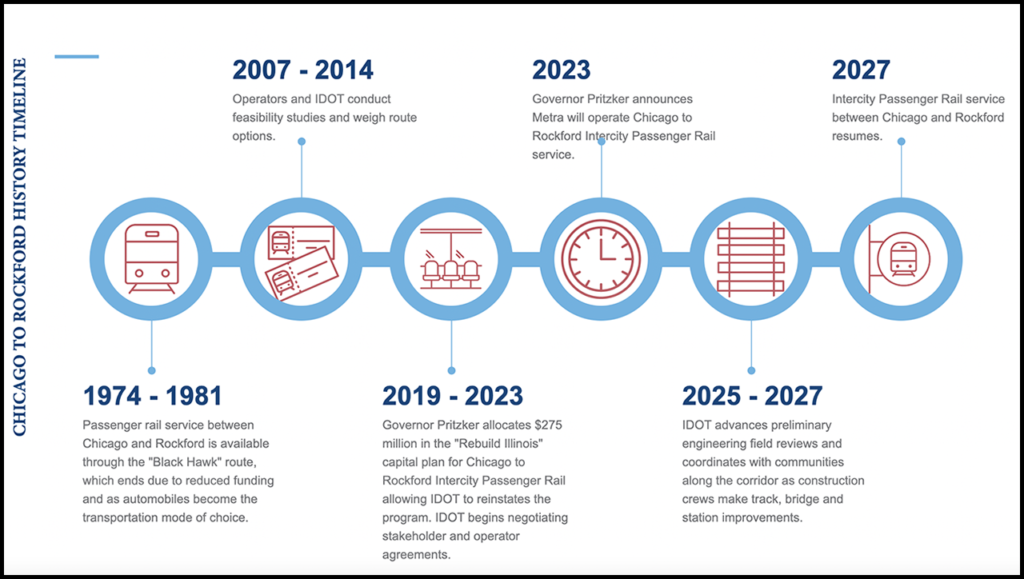
The Chicago-to-Rockford corridor is approximately 90 miles and comprises three segments:
- Milwaukee District West (MD-W; see map below): This 39-mile segment is between Chicago and Big Timber Road in Elgin. In addition to passenger rail service, MD-W is a part of Metra’s commuter rail network to Chicago Union Station. Canadian Pacific Kansas City also dispatches freight services over the segment, according to IDOT.
- Big Timber Road Metra station-to-Belvidere: UP owns this segment and operates at least one round trip freight train between West Chicago and Belvidere through Big Timber Road, IDOT reported. Another local round trip freight train operates from Belvidere to as far east as Huntley depending on need, several days per week, the Department added.
- Belvidere-to-Rockford: UP owns this segment and dispatches round trip freight train traffic as needed. IDOT said that this track segment, which includes the bridge over the Rock River, will likely need considerable rehabilitation.
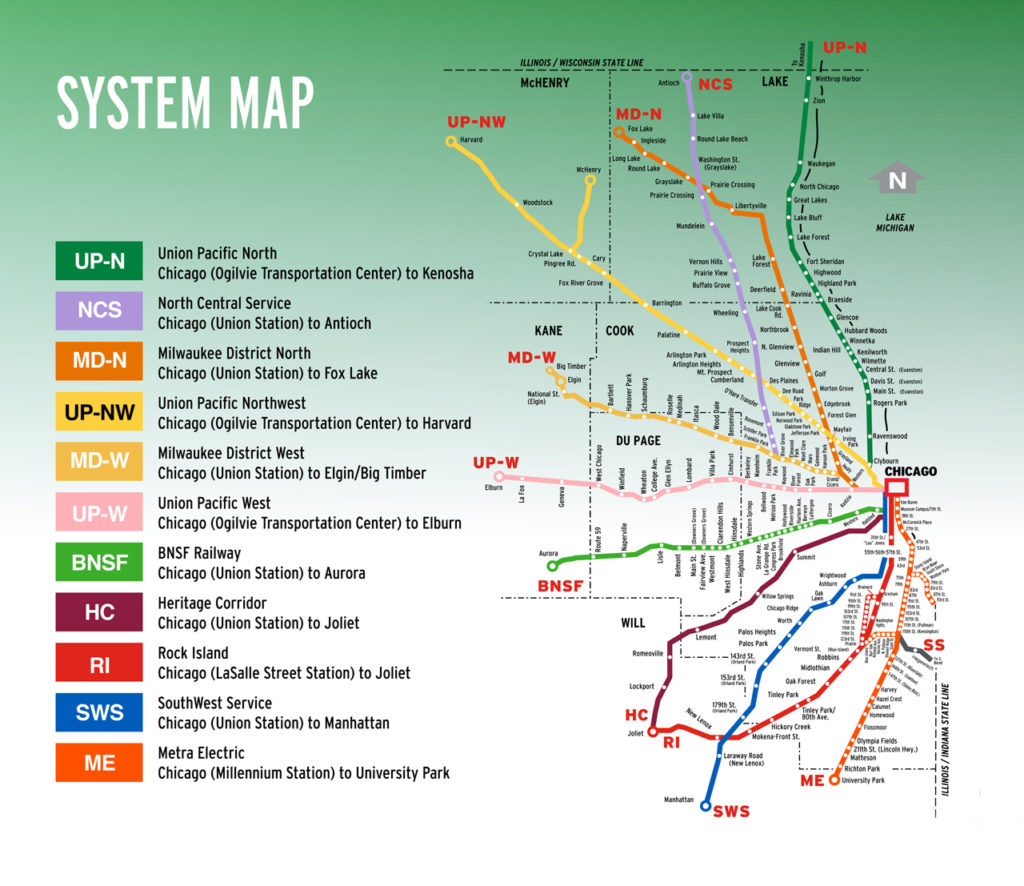
IDOT said the following work will be needed to prepare for service restoration:
- Track improvements between Elgin and Rockford to support increasing speeds from existing freight operations (40 mph or slower) to passenger rail operations (up to 79 mph).
- Construction of a connection between Metra and UP tracks near Big Timber Road in Elgin.
- Enhanced grade crossing surfaces, highway approaches and warning devices.
- Improved bridge structures, which may include the Rock River Bridge.
- A potential second siding and second main track locations, such as a potential siding in Marengo and a potential second main track past the Belvidere yard.
- Construction of stations in Huntley and Belvidere.
With these improvements, travel time is expected to be slightly less than two hours between Chicago and Rockford, with two round trips per day planned, according to the Governor’s Office. Boarding locations in Chicago and Rockford, as well as a fare structure and schedule, are still to be determined.
Pending Metra board approval, the next phases of the project involve reaching operations and maintenance agreements among IDOT, Metra and UP, the Governor’s Office said. Also required: engineering studies to determine the scope of the track improvements needed to support increasing speeds.
“This is a major step for Metra to journey outside our six-county, Chicago-area home, but it is something we are well-prepared to do,” Metra CEO and Executive Director Jim Derwinski said. “We know how to operate passenger trains—we’ve been doing it for nearly 40 years, through polar vortexes and hot streaks and pandemics and with an on-time performance rate that is the envy of our peers. And we could not be more excited that we will soon be providing service to Rockford.”
“Union Pacific couldn’t be prouder of the partnerships we’ve forged with Metra and the Illinois Department of Transportation to expand passenger rail service in Illinois,” UP Chairman, President and CEO Lance Fritz said. “This project underscores the opportunities that exist when the public and private sector work together.”
“All across the state, Rebuild Illinois is making connections between communities and giving residents options to get to where they need to go,” Illinois Transportation Secretary Omer Osman said. “The new service between two great Illinois cities strengthens our multimodal system of transportation and shows once again why our state is the transportation hub of North America.”
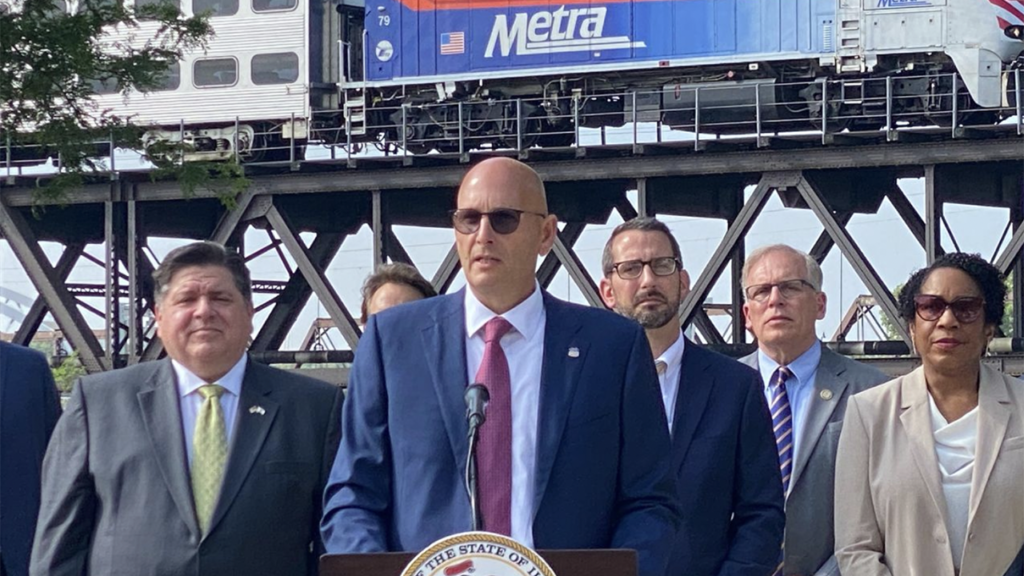
“The return of passenger rail to the Rockford area is fantastic news and will not only benefit their commuters, it will have far-reaching effects and greatly enhance transportation options for business travelers, students, tourists and even residents of nearby states who seek an environmentally friendly option when traveling to Chicago,” said Robert W. Guy, State Director, Illinois Legislative Board of the SMART-Transportation Division. “Connecting Rockford to Chicago via rail could also help alleviate congestion on our over-burdened highway system.”
“This [project] will help one of our state’s largest cities continue to grow its economy and provide its citizens access to countless jobs and opportunities,” said Brian Shanahan, National Vice President of the Transportation Communications Union/IAM. “All Illinoisians deserve access to fast, frequent passenger rail service and investments like this one will help build a 21st century transportation network while creating thousands of good paying union jobs.”
In related developments, after roughly 20 years of development HrSR (higher-speed rail) with speeds up to 110 mph went into effect as of June 26 on Amtrak’s 284-mile Chicago-St. Louis corridor, on Lincoln Service and Missouri River Runner trains (300, 301, 302, 305, 306, 307, 318 and 319), as well as on the Texas Eagle. Also, UP on March 30 reported working “to safely and seamlessly transfer its commuter rail operation in Chicago” to Metra by the end of first-quarter 2024. As part of the transition, Metra will take over services including train crew, mechanical, car cleaning, rolling stock maintenance, ticket sales and some engineering services, according to the Class I, which noted that it will continue to maintain the track and manage train movements on its lines: Union Pacific West, Union Pacific Northwest and Union Pacific North.
* According to the Governor’s Office, Rebuild Illinois includes more than $1 billion to expand and improve rail across the state, including $225 million to restore passenger service to the Quad Cities, $100 million to improve safety and reliability on Amtrak’s Saluki service between Chicago and Carbondale, and $492 million to invest in modernizing operations in the northeastern Illinois through the Chicago Region Environmental and Transportation Efficiency (CREATE) program.



